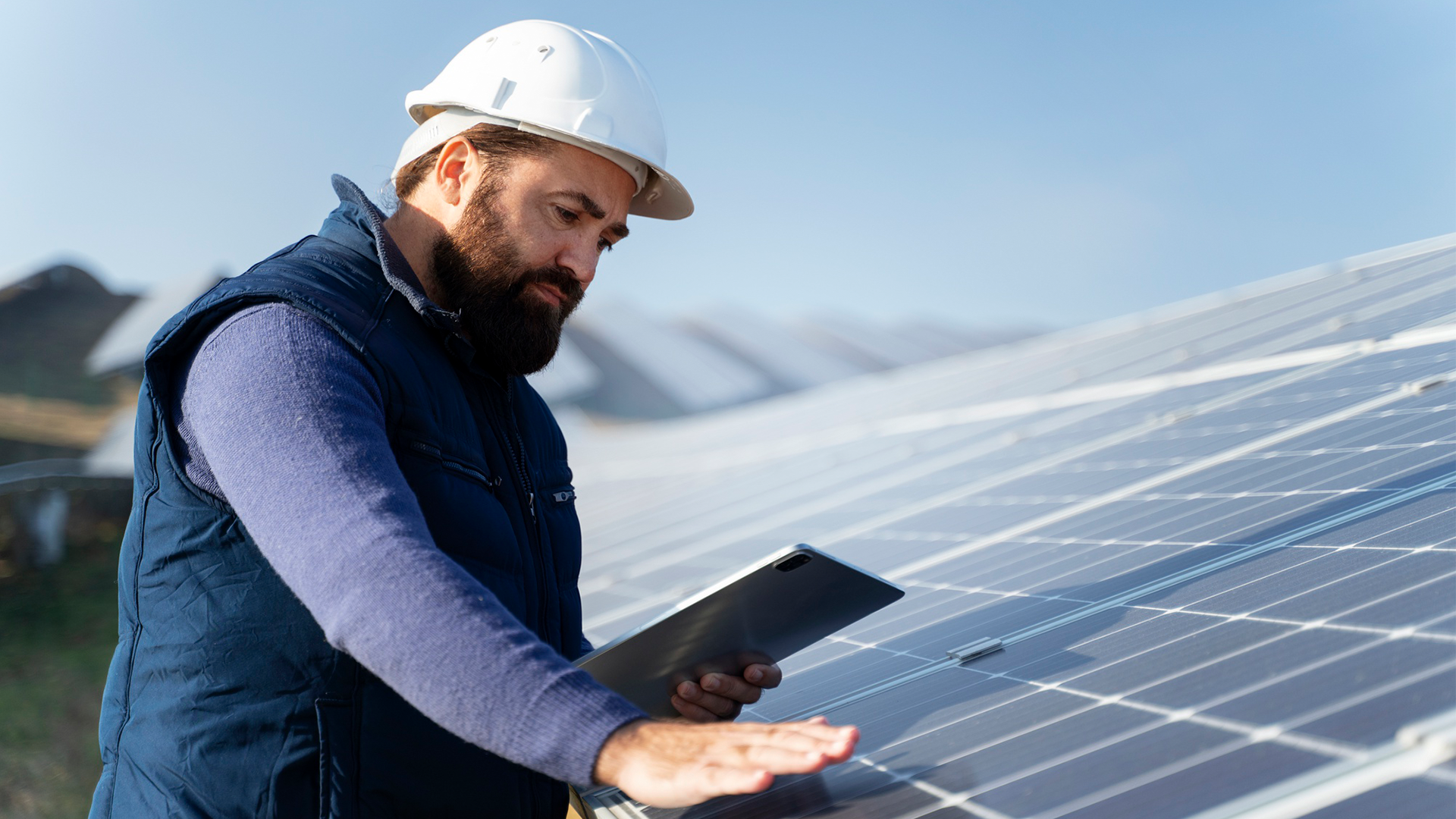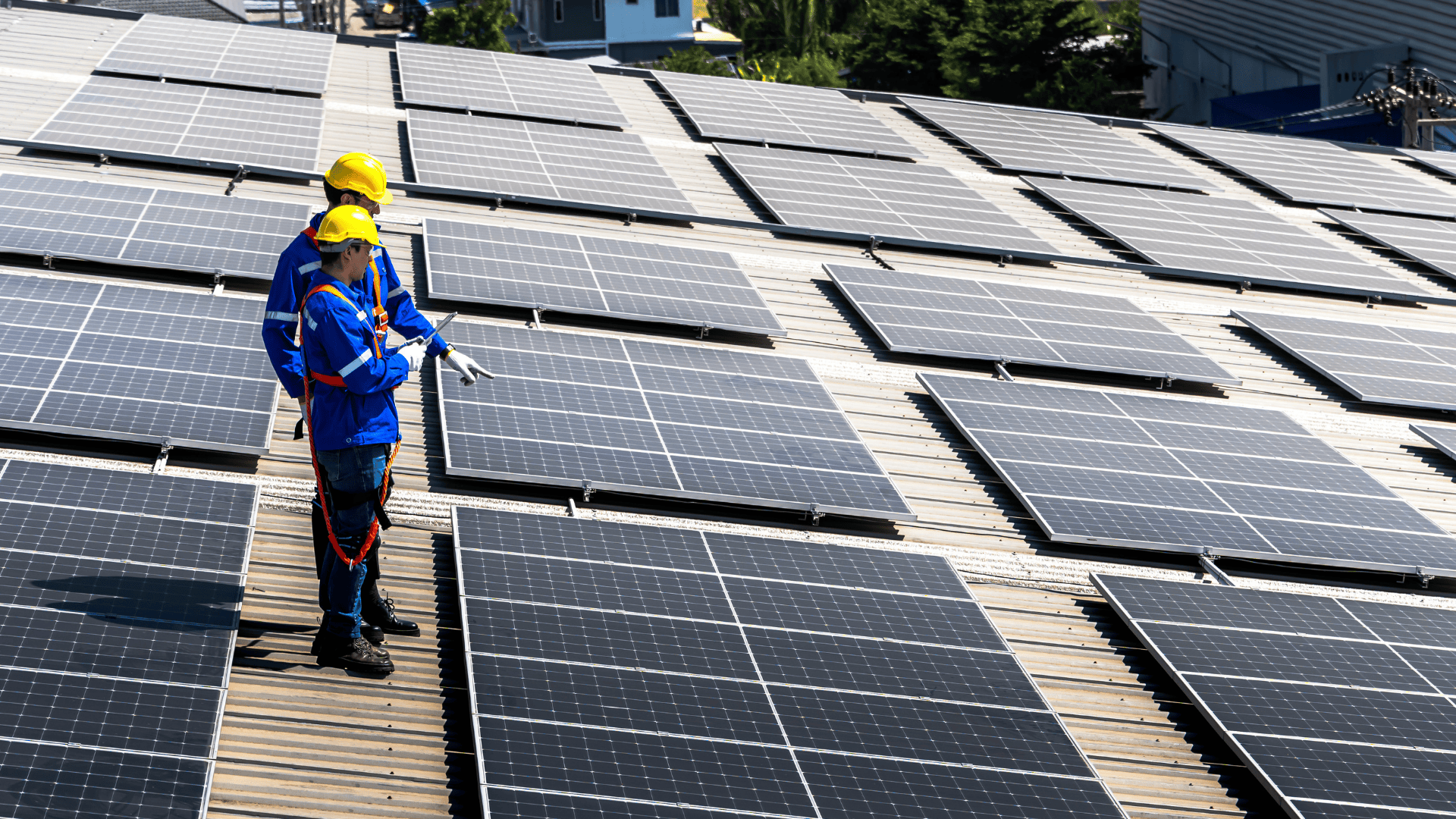August 22, 2022
What is a solar site survey?
A solar site survey is a process whereby the potential for solar power generation at a particular location is assessed. This assessment involves measuring various factors such as the amount of sunlight that hits the site, the angle of the sun, and the amount of shading. Based on these measurements, it can be determined whether or not a given location is suitable for solar power generation.
Solar site surveys are important because they help to identify potential problems that could prevent a solar installation from being successful. For example, through an aerial imagery if a site is found to be too shady, it may not be possible to generate enough electricity to make the installation worthwhile. Similarly, if the angle of the sun is not ideal, the solar panels may not be able to capture enough sunlight to generate power.
Previously such solar site survey used to be done by going on site of solar installation and analyze and calculate the roof orientation, number of photovoltaic panels to be installed, etc. But with the advancement in solar software technology, this process can be done by solar installers and professionals using a software. Solar design software helps in rendering solar panels without going on site taking into account the shading analysis, amount of sunlight received at any time of the day, etc. Check out the introductory video below to know more about this amazing solar resource.
By conducting a solar site survey, potential problems can be identified and addressed before an installation is attempted. You can read this checklist guide on solar site survey to know more.
How to do solar site survey?
A solar site survey is an important step in the process of planning a solar energy system. The survey helps to determine the best location for the solar panels, and also assesses the amount of sunlight that the location receives. Here are some steps to site survey process that will help you conduct a successful survey:
1. Finding the right location:
You'll want to find a location that gets plenty of sun exposure throughout the day. A south-facing roof is ideal, but any location that gets at least 6 hours of direct sunlight will work.
2. Measuring the sun's angle:
Use a solar angle calculator (you can find these online) to determine the angle of the sun at your location. This will help you determine the best placement for your solar panels.
3. Checking for shade :
Make sure there are no trees or other obstructions that could cast shadows on your solar panels. Shade can significantly reduce the amount of power your panels can generate.
4. Checking the roof :
Make sure your roof is in good condition and able to support the weight of solar panels. If you're not sure, have a professional inspect it.
5 Reasons to do a solar site survey
Solar site surveys are an important part of the solar PV development process. They help to assess the potential for solar PV development at a particular location, and can provide valuable information on the best way to develop a project. Here are five reasons why you should do a solar site survey:
1. To assess the solar potential of a site:
A site survey will help you to assess the potential for solar PV development at a particular location. It can provide valuable information on the amount of sunlight that a site receives, the orientation of the sun, and the best time of year for solar PV development.
2. To determine the best way to develop a project:
A solar site survey can help you to determine the best way to develop a solar project, by providing information on the most suitable location for PV panels, the most effective orientation of the panels, and the best time of year for solar PV development.
3. To minimise the impact of shading:
Shading from buildings, trees, and other objects can reduce the output of PV panels. A solar site survey can help you to identify areas of shading, and to minimise the impact of shading on the performance of your PV system.
4. To assess the risk of flooding:
Flooding is a major risk for solar PV development. A solar site survey can help you to assess the risk of flooding at a particular location, and to choose the best location for your PV system to minimise the risk of flooding.
5. To assess the risk of snow and ice:
Snow and ice can also reduce the output of PV panels. A solar site survey can help you to assess the risk of snow and ice at a particular location, and to choose the best location for your PV system to minimise the risk of snow and ice.
Solar site surveys are an important part of the solar PV development process. They can provide valuable information on the potential for solar PV development at a particular location, and can help you to determine the best way to develop a project.
How to do solar site survey?
A solar site survey is an important step in the process of designing and installing a solar power system. The survey helps to determine the best location for the solar PV array, taking into account factors such as sunlight exposure, land slopes, trees and other shading objects, and proximity to the electrical service entrance.
It is also important to consider the long-term effects of site factors on performance of solar PV system. For example, trees may grow and shade the PV array over time, or a new building may be constructed nearby that casts a shadow on the array. By doing a solar site survey at the outset, you can avoid potential problems down the road.
Here are the steps involved in conducting a solar site survey:
1. Evaluate the site's solar potential
The first step is to assess the site's solar potential, which will help you determine the best location for the PV array. To do this, you'll need to know the site's latitude and longitude, as well as the average daily sun hours for the area.
You can evaluate the site's solar potential using Sunbase Solar Design Software which is an accurate way of calculating potential power output for the site. Sunbase Solar Design Software is used by hundreds of solar installers and companies in the solar industry, so check it out today!
2. Measure the available space
Once you've determined the best location for the PV array, you'll need to measure the amount of space available. This will ensure that the array will fit in the desired location and won't interfere with other structures or objects on the property.
3. Evaluate the site's shading
Shading from trees, buildings, and other objects can significantly reduce PV system performance. Therefore, it's important to carefully evaluate the shading at the proposed array location. This can be done by using a solar pathfinder or sun angle calculator to determine the amount of sunlight that will reach the array throughout the day.
4. Determine the best PV array orientation
The final step in conducting a solar site survey is to determine the best PV array orientation. This is based on the latitude of the site and the time of year. For most locations in the United States, a south-facing array is ideal, as it will receive the greatest amount of sunlight during the day. However, there may be circumstances where a different orientation is preferable, such as if the array will be installed on a roof with a limited amount of space.
After completing a solar site survey, you'll have all the information you need to design and install a PV system that will maximize its potential for generating electricity.
Solar Design Software
Solar design software is used to create models of proposed solar photovoltaic (PV) and to calculate the expected energy production and cost of those systems. This software helps in doing the site survey of solar installation without the need to make multiple visits to the site. This software has features like-
- Shading analysis
- Determine the best placement of PV panels
- Estimate energy production
- Calculate the cost of a solar PV system
The benefits of using solar design software are-
1. Quick and easy site assessment
2. Helps in reducing the time and cost associated with site visits
3. Provides accurate data for making decisions about solar PV installation.
There are a number of different types of solar design software available, each with its own features and capabilities. Some solar design software is designed specifically for solar company, while other software can be used for both PV and thermal system modelling. There are also a variety of programs that offer different levels of complexity, from simple tools that allow users to input basic data. Check out this article to find the best solar design software for your solar company.
Conclusion
So, if you are looking to install a solar system in your home or business, it is important to do a site survey first. By doing a site survey, you can get an idea of how much sunlight your property receives and what kind of system will work best for you. You can also find out how much the solar panel installation will cost and what rebates and tax credits are available.
About Sunbase
Sunbase helps solar companies succeed through a suite of Solar CRM tools like Solar Lead Management Software ,Solar Proposal Software, etc.! To book your free demo or an appointment, contact us here.
I agree to receive marketing messaging from Sunbase at the phone number provided above. I understand data rates will apply, and can reply STOP to OPT OUT.







